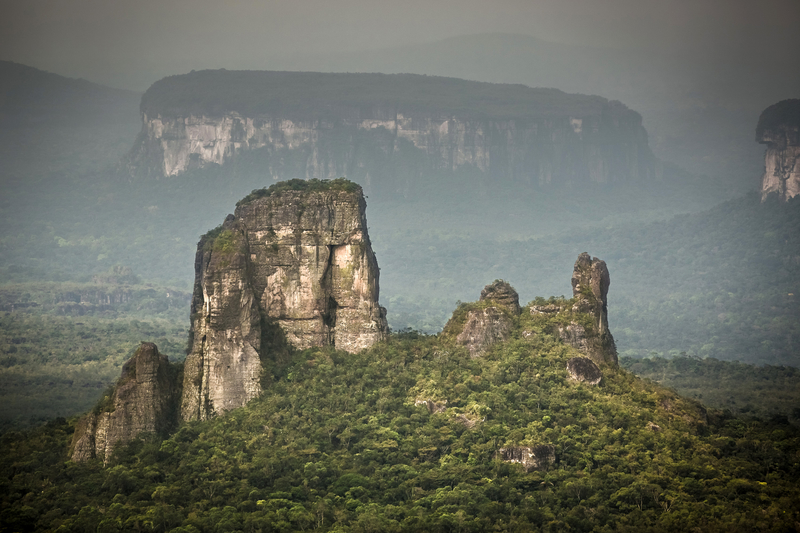Amazon fires: Explaining Brazil's resistance against international efforts
Brazil’s resistance to “internationalization” of the Amazon forest is not new, the fight actually started in the 1960s and 70s.

After a G7 summit in France recently, President Emmanuel Macron announced that leaders of one of the most powerful intergovernmental organization will be contributing USD 20 million to tackle the devastating fires that have been burning Amazon rainforest from several weeks now. But within a few hours, Brazil retaliated and “rejected” their offer of the aid.
Now it would have been understandable if Brazil had argued how USD 20 million are trivial to save a forest as huge and as important as the Amazon but President Bolsonaro’s administration hit out at those countries for trying to “buy” their sovereignty.
Bolsonaro and Macron have been at odds even before the aid was announced at the G7 summit. Macron had earlier tweeted a picture of a burning forest, purportedly Amazon, with a caption that said “Our home is burning. Literally”. It was later revealed that the picture was fake and the French President received a lot of flak from Brazilians who suggested him to “take care of his own home first,” referring to the recent Yellow Vest protests in Paris that continued for several months and often turned violent.
Apart from Macron, celebrities like Cristiano Ronaldo, Leonardo DiCaprio, singer Ricky Martin also shared photos of burning forests that were not even of the Amazon or were old. After this incident, the Brazilian government had the support of people, even when Bolsonaro administration turned down the offer of aid by G7 countries.
Many Brazilians even claim that these fires are seasonal and are being unnecessarily hyped. Most of the reports that claim the Amazon rainforest is "burning at a record rate” are only comparing it to data available after 2013. BBC even said in an article that 2019 is not the worst year for Amazon in recent history and the forest has seen much worse fires in the 2000s, with worse being in 2005.
Decades-old fight for the Amazon
Brazil’s resistance to “internationalization” of the Amazon forest is not new, the fight actually started in the 1960s and 70s. The government gave incentives to Brazilians to conquer the land as generals feared that more powerful countries would try to capture it. Amazon rainforest is now spread over 9 countries, almost 60 percent of which is in Brazil.
Since then, major international leaders have often referred to the rainforest as a part of patrimony far larger than Amazonian countries and Brazil has always been conservative about the idea. Brazil is extremely sensitive about foreigners lurking around Amazon, especially the ones planning to do scientific work there. Politicians have often made foreign presence in the region a question of national sovereignty.
Bolsonaro’s “failure” to respond quickly to the current crisis is being criticized widely, even by some important international leaders and Brazilians are worried that it might mean that international leaders are now advocating that the country is not capable of preserving the Amazon rainforest. Even before the fires started, Bolsonaro government was heavily criticized over the rising rates of deforestation.
What Amazon rainforest has to offer, commercially and environmentally?
The rainforest is humongous, it is spread over 650 million hectares and by some estimates stores about 100 billion tonnes of carbon. It is well established as a climate regulator, and directly impacts the rainfall in Latin American and Caribbean countries. Some experts also argue that it can even impact the weather of regions as far as Europe.
Fires in Amazon rainforest not only compromise its capability to store carbon but also increases the world’s emissions. Apart from the unintentional wildfires, trees that are cut down for development are also burned and decomposed which amounts to a significant chunk of the world’s annual greenhouse gas emissions.
Now if destruction of the forest is that bad, why can’t the governments stop it? The answer lies in the vast amount of natural resources that the Amazon holds, many of which remain undiscovered.
The forest is mostly cut down to get more arable land. The globalized agricultural market has a lot of potential in the modern world and forms a significant portion of the Brazilian economy. The country is a big exporter of many agricultural commodities like sugar, soy, and beef.
But the developed countries might not have very good intentions for Amazon either. Even Europe’s fields used to be forests historically and many Brazilians now fear that the only reason they are looking up to Amazon is because they have depleted their own resources.
Awareness among consumers is the need of the hour. There has been an increase in demand for goods that are produced sustainably, ultimately pushing producers to do their part. It is also up to the governments to ensure the sustainability of not only the economy but also the environment. Innovative and sustainable alternatives are on the rise but it is ultimately on the society as a whole to adapt to them while they still have time or face catastrophic circumstances.
(Disclaimer: The opinions expressed are the personal views of the author. The facts and opinions appearing in the article do not reflect the views of Devdiscourse and Devdiscourse does not claim any responsibility for the same.)
- FIRST PUBLISHED IN:
- Devdiscourse
ALSO READ
Italian PM Meloni Invites PM Modi to G7 Summit Outreach Session in June
Pope will attend G7 summit to discuss AI, Italy says
Pope will attend G7 summit to discuss AI, Italy says
"Received the invitation, matter under consideration...": MEA on India's participation in G7 Summit
PM Modi speaks with Italian Prime Minister Meloni over phone, thanks her for invite to G7 Summit outreach sessions










